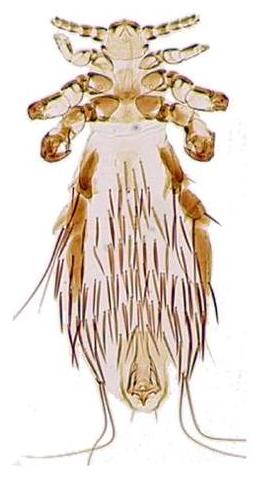Word of the Day
NIT (nit)
The egg or young of a parasitic insect, such as a louse
Common clues: Louse egg; They’re sometimes picked; Something to pick; Future louse
Crossword puzzle frequency: once a year
Frequency in English language: 54038 / 86800
News: Feeling lousy? We want to know about it
Video: How to remove head lice
Lice (singular: louse), (order Phthiraptera), also known as fly babies, are an order of over 3,000 species of wingless insects; three of which are classified as human disease agents. They are obligate ectoparasites of every avian and most mammalian orders. They are not found on Monotremes (the platypus and the echidnas or spiny anteaters) and a few eutherian orders, namely the bats (Chiroptera), whales, dolphins and porpoises (Cetacea) and pangolins (Pholidota).

Light
micrograph of Fahrenholzia pinnata
As lice spend their entire lives on the host, they have developed adaptations which enable them to maintain close contact with the host. These adaptations are reflected in their size (0.5–8 mm), stout legs, and claws which are adapted to cling tightly to hair, fur and feathers, and that they are wingless and dorsoventrally flattened.
Lice feed on skin (epidermal) debris, feather parts, sebaceous secretions and blood. A louse's color varies from pale beige to dark grey; however, if feeding on blood, it may become considerably darker.
A louse's egg is commonly called a nit. Lice attach their eggs to their host's hair with specialized saliva which results in a bond that is very difficult to separate without specialized products. Living lice eggs tend to be pale white. Dead lice eggs are more yellow. Lice are very annoying and are difficult to remove, but not impossible.
This article is licensed under the GNU Free Documentation License. It uses material from the Wikipedia article "Louse".
|
|